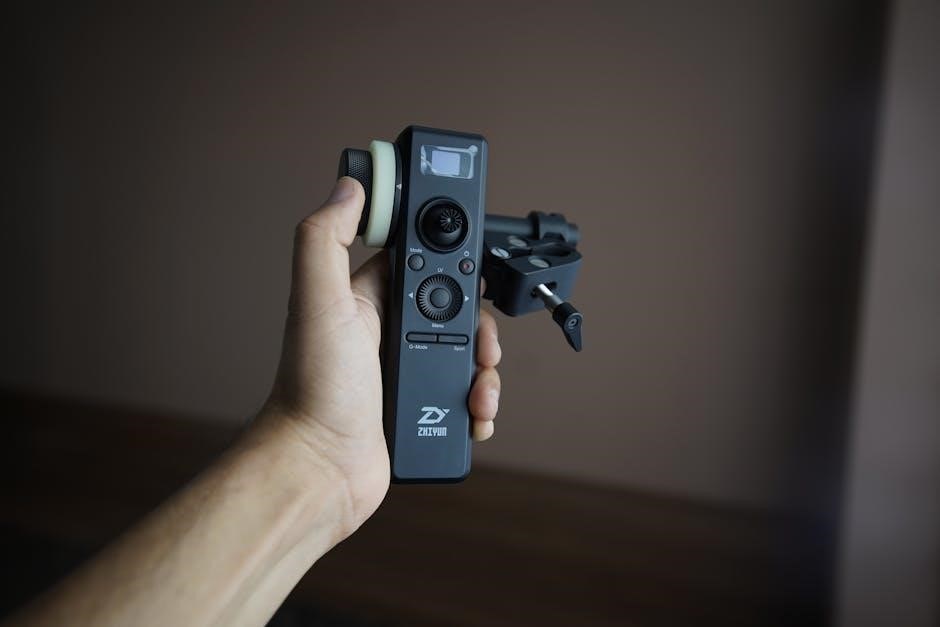e bike controller manual
E-bike controllers are essential for managing power delivery, ensuring smooth operation, and optimizing performance. They act as the brain, connecting motors, batteries, and components seamlessly for a superior riding experience.
1.1 What is an E-Bike Controller?
An e-bike controller is a central electronic component that manages the flow of electrical energy between the battery, motor, and other components. It regulates power delivery, ensuring efficient and safe operation. The controller interprets inputs from the throttle, pedals, and brakes, adjusting motor output accordingly. It also protects the system from overcurrent, overheating, and short circuits, making it a critical part of the e-bike’s functionality and safety.
1.2 Importance of the Controller in E-Bikes
The controller is the central component of an e-bike, managing power flow and ensuring smooth interaction between the motor, battery, and other components. It protects against overcurrent, overheating, and short circuits, while optimizing performance and efficiency. A well-functioning controller enhances safety, reliability, and riding experience, making it indispensable for proper e-bike operation and longevity.
Understanding the E-Bike Controller Manual
Understanding the e-bike controller manual is crucial for optimal setup, configuration, and troubleshooting. It provides essential guidelines, diagrams, and safety precautions for effective controller operation and maintenance.
2.1 Key Components of the Controller
The e-bike controller consists of a microcontroller, MOSFETs, sensors, and communication interfaces. These components work together to regulate power flow, monitor speed, and ensure efficient motor operation. The microcontroller processes inputs from throttle, brakes, and sensors, while MOSFETs handle high-current switching. Sensors provide real-time data on temperature, voltage, and current, ensuring safe and optimal performance. Understanding these components is essential for troubleshooting and customization.
2.2 Reading and Interpreting the Manual
Reading the e-bike controller manual is crucial for understanding its operation and customization. The manual provides detailed diagrams, wiring instructions, and troubleshooting guides. It explains how to interpret error codes, adjust settings, and perform basic repairs. Familiarizing yourself with the manual ensures safe and effective use of the controller, helping you optimize performance and address issues efficiently. Proper interpretation is key to maintaining your e-bike’s functionality and longevity.
2.3 Basic Settings and Configurations
Configuring your e-bike controller involves setting parameters like power limits, speed thresholds, and throttle sensitivity. The manual guides you through adjusting these settings to match your riding style and local regulations. Correct configuration ensures optimal performance, safety, and compliance. It also covers how to update firmware, calibrate components, and reset default settings. Proper setup enhances your e-bike’s efficiency and reliability, making your riding experience more enjoyable and tailored to your needs. Always refer to the manual for specific instructions and precautions to avoid errors during the process. By following the guidelines, you can customize your e-bike to suit various terrains and conditions, improving overall functionality and satisfaction. Additionally, understanding basic configurations helps in troubleshooting common issues, reducing downtime and extending the lifespan of your controller. Regular reviews of the manual ensure you stay informed about best practices and any new features or updates available for your e-bike’s controller. This proactive approach not only improves performance but also contributes to a safer and more pleasant riding experience. By mastering these configurations, you can unlock the full potential of your e-bike and enjoy seamless control over its operation. Furthermore, exploring advanced settings, as outlined in the manual, allows for further customization, catering to the specific demands of different riding environments and personal preferences. This level of customization ensures that your e-bike remains adaptable and efficient, providing years of reliable service with proper maintenance and adjustments. The manual serves as a comprehensive resource, empowering users to take full control of their e-bike’s capabilities and tailor its performance to their unique needs. Through careful configuration and adherence to the manual’s instructions, riders can maximize their e-bike’s potential, ensuring a smooth and enjoyable journey every time. Ultimately, understanding and applying the basic settings and configurations outlined in the manual are essential steps in optimizing your e-bike’s performance and enhancing your overall riding experience.
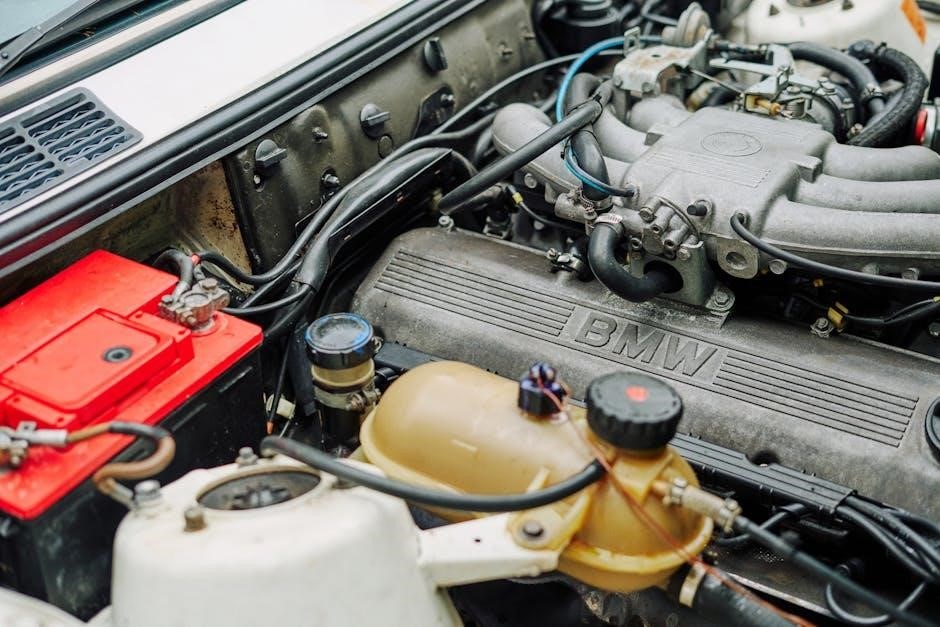
Choosing the Right Controller for Your E-Bike
Selecting the ideal controller involves considering power rating, compatibility with motors and batteries, and desired features. Ensure it aligns with your e-bike’s specifications for optimal performance and safety.
3.1 Factors to Consider When Selecting a Controller
When choosing a controller, consider power rating, voltage, and current capacity to match your e-bike’s motor and battery. Compatibility, efficiency, and programmability are crucial. Additionally, evaluate thermal management, durability, and brand support. Ensure the controller adheres to local regulations and offers necessary safety features. These factors ensure optimal performance, reliability, and a seamless riding experience.
3.2 Compatibility with Motors and Batteries
Ensure the controller is compatible with your e-bike’s motor type and battery specifications. Match voltage, current, and power ratings to avoid inefficiency or damage. Verify phase and phase wire configurations align with the motor. Check battery type compatibility, such as lithium-ion or lead-acid. Proper pairing ensures optimal performance, safety, and longevity of your e-bike system.
3.3 Popular Controller Models and Their Features
Popular e-bike controllers include the Bafang BBS series, known for high-torque support and programmable settings. The 48V 20Ah model offers efficient power management and versatility for various motor types. The Yellow Box controller is renowned for its reliability and advanced thermal management. These models are widely adopted for their durability, customization options, and compatibility with modern e-bike systems, catering to both DIY enthusiasts and professional setups.
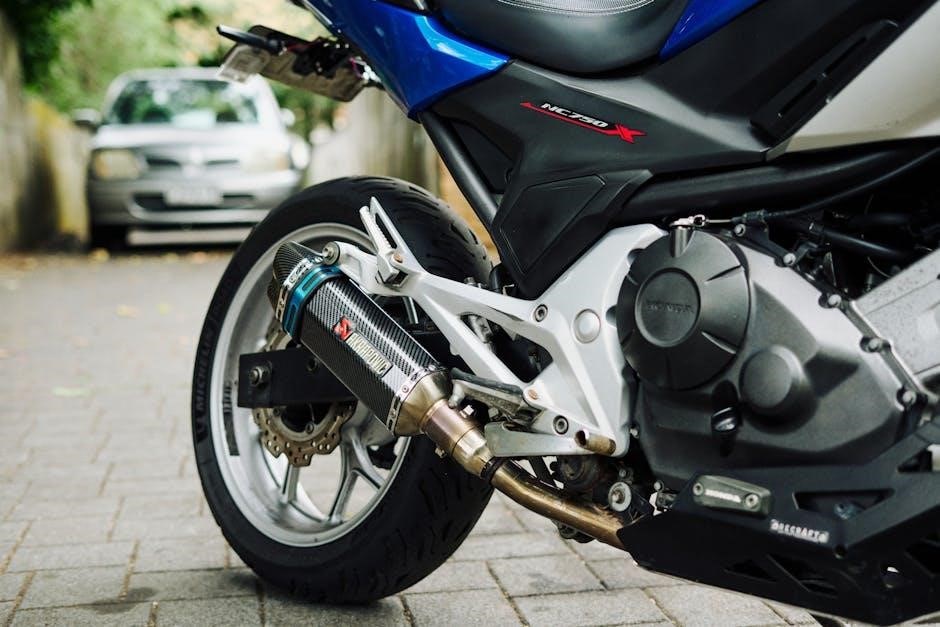
Common E-Bike Controller Models
Popular e-bike controllers include the KT LCD series, known for user-friendly interfaces, and the Satiator, favored for deep customization. Both offer high performance and adaptability.
4.1 The 48V 20Ah Controller: Features and Benefits
The 48V 20Ah controller is a high-performance option, offering efficient power management for e-bikes. It supports advanced motor control, ensuring smooth acceleration and consistent speed. With a robust design, it handles heavy loads and provides reliable operation. Key features include overcharge protection, thermal monitoring, and customizable settings. Its compatibility with various motors and batteries makes it a versatile choice for riders seeking durability and enhanced performance.
4.2 The Role of the Yellow Box Controller
The Yellow Box Controller is a reliable and user-friendly option for e-bike enthusiasts, known for its simplicity and effectiveness in managing electrical systems. It efficiently connects the battery to the motor, ensuring smooth power delivery and consistent performance. Its straightforward interface makes it easy to install and operate, catering to riders who prefer a no-frills, dependable control system. Compatible with various e-bike configurations, it offers a balance of simplicity and functionality, making it a popular choice among DIY builders and casual riders alike.
4.3 Bafang Controllers: Overview and Specifications
Bafang controllers are renowned for their high performance and reliability in e-bike systems. They offer versatile models, including the popular Bafang 500W and 1000W controllers, designed for scalability and compatibility with various motors and batteries. Features include waterproof designs, Bluetooth connectivity, and customizable settings. Their robust construction ensures durability, while advanced thermal management systems prevent overheating. Bafang controllers are a top choice for both casual riders and enthusiasts seeking reliable, high-performance e-bike control systems.
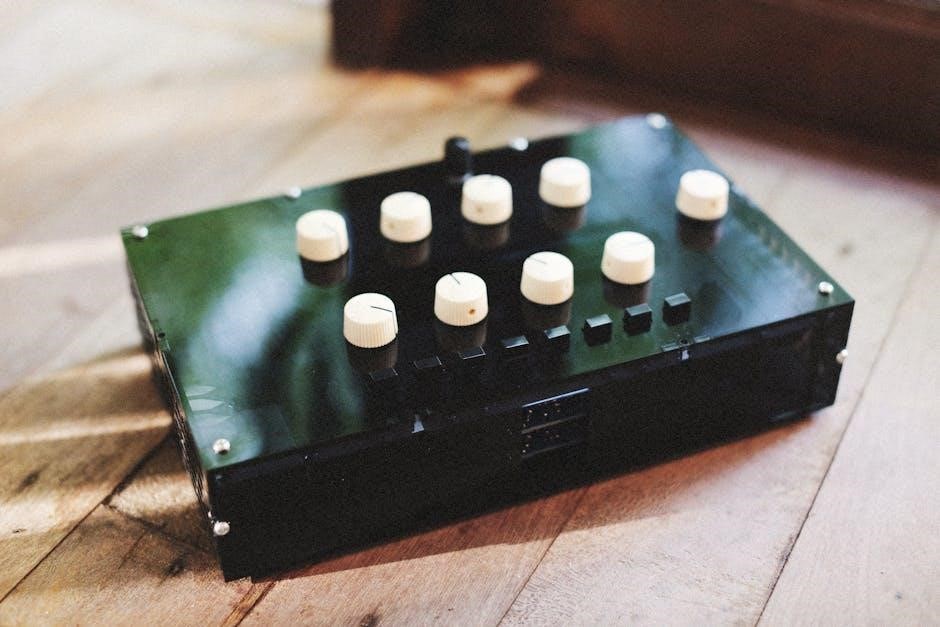
Troubleshooting Common Controller Issues
Identify and resolve issues like error codes, connectivity problems, or faulty components. Start with checking connections, consulting the manual, and resetting the system to restore functionality.
5.1 Identifying Faulty Components
Identify faulty components by inspecting for physical damage, unusual odors, or burn marks. Use a multimeter to test resistance and voltage. Check for error codes or abnormal behavior. Verify connections for corrosion or looseness. Test key components like MOSFETs, capacitors, and sensors. Refer to the manual for diagnostic procedures. A systematic approach ensures accurate identification of malfunctioning parts, preventing further damage to the e-bike system.
5.2 Solutions for Overheating Controllers
To address overheating, ensure proper ventilation and consider upgrading to a controller with a built-in heatsink or fan. Lowering the current demand by adjusting settings can help. Regularly inspect for blockages or debris. Replace faulty components promptly. Always refer to the manual for specific cooling recommendations. Proper maintenance and adjustments can prevent damage and extend the controller’s lifespan effectively.
5.3 Error Codes and Their Meanings
Understanding error codes is crucial for diagnosing controller issues. Common codes like E01 often indicate power supply problems, while E02 may signal communication faults. E03 could point to motor or sensor malfunctions. Always consult the manual for specific code definitions, as meanings may vary by model. Addressing errors promptly ensures optimal performance and prevents further damage to the controller or e-bike system.

Maintenance and Repair of E-Bike Controllers
Regular cleaning, inspection, and timely repairs ensure optimal controller performance. Always follow manual guidelines to maintain reliability and safety, preventing unnecessary damage or system failures.
6.1 Cleaning and Inspecting the Controller
Cleaning the controller involves using a soft brush and compressed air to remove dirt and debris. Inspect for physical damage, wear, or corrosion. Check connections for tightness and signs of wear. Ensure all components are secure and functioning properly. Regular maintenance helps prevent faults and extends the controller’s lifespan. Always refer to the manual for specific cleaning instructions and safety precautions.
6.2 Replacing Damaged or Worn-Out Parts
Identify damaged components using diagnostic tools or error codes. Disconnect the battery before starting repairs. Use soldering irons and replacement parts compatible with your controller model. Refer to the manual for part numbers and diagrams. After replacing parts, reconnect the battery and test the controller to ensure proper function. Always prioritize safety and consult professionals if unsure.
6.3 Firmware Updates and Software Modifications
Update your controller’s firmware to enhance performance and fix bugs. Use compatible software tools provided by the manufacturer. Follow the manual’s step-by-step guide to avoid errors. Backup settings before updating. Modifications may void warranties, so proceed cautiously. Ensure the battery is fully charged and avoid interruptions during the update process for optimal results and system stability.
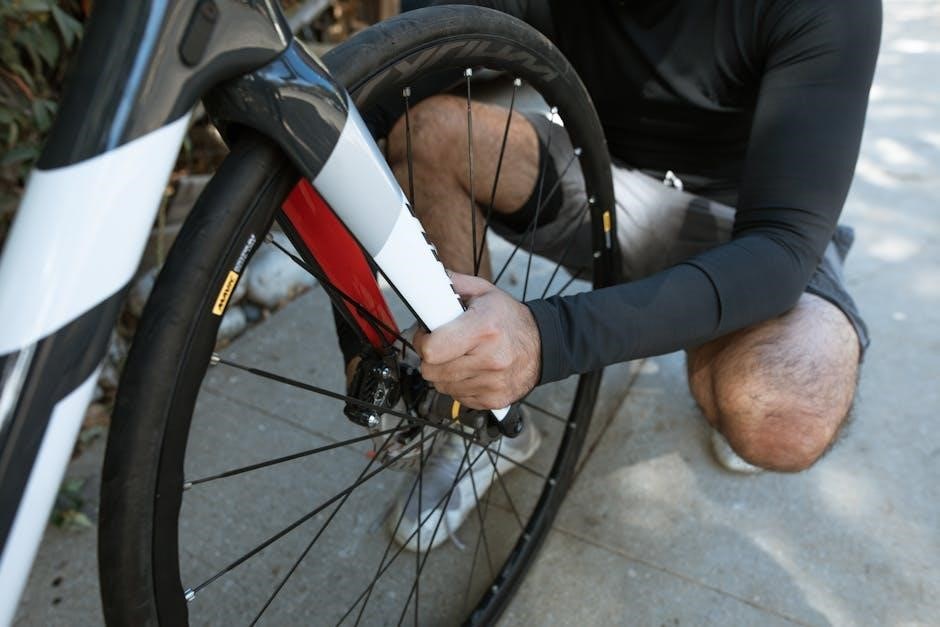
Hacking and Upgrading Your E-Bike Controller
Hacking and upgrading your e-bike controller can enhance performance and unlock hidden features. Explore advanced modifications, but be aware of risks like voiding warranties or causing system instability.
7.1 Understanding Controller Hacking Basics
Controller hacking involves modifying firmware to unlock features or improve performance. It requires reverse-engineering software and understanding electrical systems. While it can enhance functionality, it risks damaging components or voiding warranties. Proper tools and knowledge are essential to avoid instability or safety hazards. Always ensure a stable power supply and use appropriate tools to minimize risks and ensure successful modifications.
7.2 Tools and Skills Required for Hacking
Hacking an e-bike controller requires tools like soldering irons, multimeters, and software for firmware modifications. Basic electronics knowledge, soldering skills, and programming experience are essential. Familiarity with tools like Arduino or specific controller software is beneficial. Safety gear, such as gloves and goggles, is crucial when working with electrical systems. Understanding firmware architecture and electrical circuits is also necessary for successful modifications.
7.3 Risks and Legal Considerations of Hacking
Hacking an e-bike controller can void warranties, violate local laws, and pose safety risks. Unauthorized modifications may lead to legal consequences, especially if they violate e-bike regulations. There’s also a risk of electrical hazards and accidents from faulty modifications. Ensure compliance with local laws, and be aware that modified controllers may not meet safety standards or insurance requirements. Proper disposal of waste is also a legal obligation.
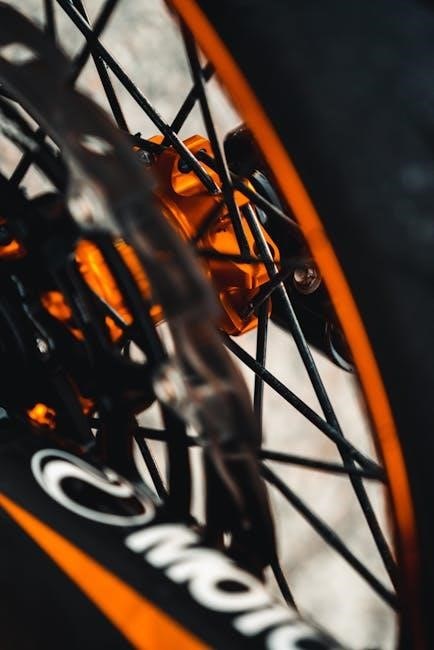
Safety Precautions When Working with Controllers
Always disconnect the battery before servicing. Use insulated tools to prevent shocks. Work in a well-ventilated area to avoid inhaling dust or fumes from components.
8.1 Handling Electrical Components Safely
Always disconnect the battery before handling electrical components. Use insulated tools to prevent electric shocks. Wear protective gloves and safety glasses. Ensure the controller is grounded to discharge capacitors. Avoid touching sensitive electronics to prevent static damage. Work in a well-ventilated area to avoid inhaling dust or fumes. Never bypass safety features or tamper with live circuits without proper precautions.
8.2 Avoiding Common Mistakes During Repairs
Always disconnect the battery before starting repairs to prevent electric shocks. Use the correct tools to avoid damaging components. Never force connections or overtighten screws, as this can cause irreversible damage. Ensure all capacitors are discharged to prevent accidental discharge. Properly ground yourself to avoid static electricity damage. Double-check all connections before reassembling to ensure reliability and safety. Follow the manual step-by-step to avoid oversight.
8.3 Best Practices for Testing and Reinstalling
After repairs, test the e-bike at low power to ensure proper functionality. Check all connections and settings, such as torque and speed limits. Start with low power settings and gradually increase to avoid issues. Monitor for overheating or unusual behavior. Once confirmed stable, proceed with final installation. Always use correct tools and follow safety guidelines from the manual to ensure reliability and safety.
Legal and Regulatory Considerations
Understand local e-bike laws and ensure your controller complies with regulatory standards. Modifications may affect legality, so verify settings align with legal requirements to avoid penalties.
9.1 Compliance with Local E-Bike Laws
Ensure your e-bike controller settings comply with local regulations, including power limits, speed caps, and pedal-assist rules. Modifications or hacks may violate laws, leading to penalties or confiscation. Always verify legal requirements before adjusting controller settings to maintain compliance and avoid legal issues while operating your e-bike safely and responsibly.
9.2 Warranty and Liability Issues
Modifying or tampering with your e-bike controller may void its warranty and expose you to liability. Unauthorized changes can cause malfunctions, leading to accidents or legal consequences. Always adhere to manufacturer guidelines and seek professional assistance for repairs. Be aware that manufacturers may not cover damages resulting from unauthorized modifications, ensuring you understand the risks before making changes.
9.3 Environmental Impact of Controller Disposal
E-bike controllers contain hazardous materials like lead and lithium, posing environmental risks if disposed of improperly. Proper recycling through designated e-waste facilities is crucial to prevent contamination of soil and water. Manufacturers often provide guidelines for eco-friendly disposal, and users should prioritize sustainable practices to minimize the ecological footprint of their e-bike components.

Tools and Equipment Needed for Controller Work
Essential tools include a soldering iron for repairs, a multimeter for electrical diagnostics, wire strippers for cable maintenance, Torx screwdrivers for casing, hex keys for bolts, a work light for visibility, safety gear like gloves and goggles, and a clean, organized workspace to prevent damage or loss of components. These tools ensure safe and effective controller maintenance and repairs.
10.1 Essential Tools for DIY Repairs
A soldering iron, multimeter, and Torx screwdrivers are must-haves. A logic analyzer helps debug controller signals, while a bench power supply safely tests components. Wire strippers, heat guns, and thermal paste ensure proper connections and cooling. A clean workspace and anti-static wrist strap protect components from damage. Software tools like Arduino IDE or specialized firmware flashers may also be needed for advanced modifications and troubleshooting.
10.2 Recommended Software for Firmware Modifications
For firmware modifications, essential software includes Arduino IDE for programming and Avrdude for flashing. PlatformIO supports advanced features for complex modifications. Manufacturer-specific software ensures compatibility with proprietary systems. Open-source tools like these provide flexibility and customization, making firmware modifications accessible to DIY enthusiasts.
10.3 Safety Gear for Electrical Work
Essential safety gear includes insulated gloves, safety glasses, and a multimeter for voltage testing. Steel-toe boots protect against physical harm, while a fire extinguisher ensures readiness for emergencies. A well-lit workspace and anti-static wrist strap prevent component damage. Always use high-quality gear to avoid injuries and ensure safe electrical work on e-bike controllers.

Case Studies and Real-World Examples
A successful controller upgrade improved an e-bike’s performance, while community shared knowledge highlighted common mistakes and solutions, fostering innovation and practical applications in real-world scenarios.
11.1 Successful Controller Upgrades and Hacks
Enthusiasts have successfully upgraded controllers to unlock higher speeds and torque, using tools like software flashed to enhance performance. One user increased their e-bike’s efficiency by 30% through a custom firmware tweak, while another achieved smoother acceleration by reconfiguring controller settings, demonstrating the potential for personalized e-bike optimization.
11;2 Lessons Learned from Common Mistakes
Common mistakes include ignoring thermal limits, leading to overheating, and incorrect firmware installation, causing system malfunctions. Overlooking proper grounding and wiring has resulted in electrical failures. Users emphasize the importance of following the manual and testing changes gradually to avoid irreversible damage. These lessons highlight the need for patience and adherence to best practices when modifying controllers.
11.3 Community Contributions and Shared Knowledge
The e-bike community actively shares knowledge and innovations, fostering collaboration and progress. Enthusiasts post tutorials, modifications, and solutions online, creating a wealth of resources for users. Forums and social media groups dedicated to e-bike controllers have become hubs for exchanging ideas and troubleshooting. This collective effort promotes customization, safety, and performance, benefiting both newcomers and experienced riders.

Future Trends in E-Bike Controller Technology
Future trends include advanced smart controllers with enhanced connectivity, improved energy efficiency, and integration with IoT devices. Sustainable materials and AI-driven systems are expected to dominate, offering smarter, eco-friendly solutions.
12.1 Advances in Smart Controllers and Connectivity
Smart controllers are evolving with Bluetooth and Wi-Fi connectivity, enabling seamless integration with smartphones and IoT devices. Enhanced app control allows real-time monitoring and customization of settings. AI-driven energy management improves efficiency, while over-the-air updates ensure controllers stay up-to-date. These advancements promise a more connected, user-friendly, and adaptive e-bike experience, catering to both performance and sustainability needs.
12.2 Integration with Other E-Bike Components
Modern controllers seamlessly integrate with motors, batteries, and displays, ensuring optimized performance. Enhanced communication protocols improve efficiency and reliability. Sensors and software work together to synchronize power delivery, braking, and gear shifting. This holistic approach enhances ride quality, customization, and overall system responsiveness, making e-bikes more user-friendly and adaptable to diverse riding conditions and preferences.
12.3 Emerging Technologies and Innovations
Advancements in AI and machine learning are revolutionizing controller technology, enabling smarter power management and predictive maintenance. Wireless connectivity and app integration are becoming standard, allowing riders to customize settings and monitor performance remotely. Innovations like regenerative braking and energy recovery systems further enhance efficiency. These cutting-edge developments promise to make e-bikes more sustainable, connected, and tailored to individual rider needs.
Understanding and maintaining your e-bike controller is crucial for optimal performance and longevity. This manual provides essential insights to help you navigate and enhance your e-bike experience.
13.1 Summary of Key Takeaways
Understanding your e-bike controller manual is vital for optimal performance and safety. Proper installation, settings, and maintenance ensure longevity. Compatibility with motors and batteries is crucial. Troubleshooting common issues and adhering to safety guidelines are essential. Regular updates and inspections prevent faults. Always follow manufacturer guidelines and seek professional help when needed. Safe handling and adherence to local laws ensure a smooth e-bike experience.
13.2 Encouragement for Further Exploration
Exploring your e-bike controller manual is just the start of enhancing your e-bike experience. Dive deeper into tutorials, forums, and videos to unlock advanced customization. Experiment with settings safely and join communities for shared knowledge. Embrace the thrill of optimizing your ride while ensuring safety and compliance. The world of e-bike modification awaits—explore, learn, and enjoy the journey of continuous improvement.
